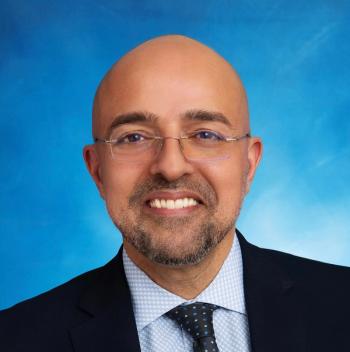
Patient Engagement Is a Priority for Healthcare Execs in 2019
Healthcare executives want to increase patient engagement and population health programs, but face many obstacles.
Photo and thumbnail have been modified. Courtesy of Bill Branson (Photographer)
A
The 9th Annual Industry Pulse survey, conducted by Change Healthcare and HealthCare Executive Group, reflected the views of healthcare executives on more than 16 topics, including: general market trends, social determinants of health, population health, value-based care, cybersecurity, clinical and data analytics, consumer engagement and risk sharing.
One of the major findings of the survey revealed that one-third (32.2 percent) of healthcare executives believe non-healthcare market entrants could upend industry business models.
This result could suggest that healthcare leaders recognize that big tech and big retail companies like Amazon, Walmart, Google and Apple will force the industry to change how it conducts business.
Along with disrupting the current business model, 13.3 percent said that external market entrants will disrupt healthcare by introducing new innovations in healthcare delivery, and 11.1 percent said they would disrupt the industry through refined consumer experiences.
“With all these uncertainties, one this is sure: Industry concern over external disruption is widespread,” the report said.
Integrating the Social Determinants of Health
Similar to the results of last year’s survey, 18.4 percent of healthcare executives said that coordinating with community programs and resources was the main way that they are integrating social determinants of health into their population health programs.
Offering a social assessment with the health risk assessment (15.1 percent) was the next most popular mode of integration, while combining medical data
with other data resources (13.9 percent) was the third most voted for option.
In the next year, 63.7 percent of healthcare executives said that care coordination is the biggest non-medical barrier to care or health that their organizations plan to act on. Transportation (39.1 percent) was second, with food insecurity and access (27 percent) as the third most important factor.
And while care coordination was called the key to surmounting barriers, non-medical approaches are slowed down by reimbursement, metrics and data sharing.
Almost half of the respondents (49.2 percent) said that they anticipate the lack of payment structures to be the main barrier when integrating or supporting such non-medical solutions into their population and clinical care programs.
“As more of our consumers… are moving to Managed Medicaid, we have to figure out how to treat that population with reduced payments but still provide the quality care,” one hospital executive respondent said.
And 48.7 percent said that a lack of effectiveness metrics for non-medical solutions will be a barrier, while 45.5 percent said member or patient adoption of solutions will be important to overcome.
Increasing Patient Engagement
If providers or payers fail to make partners of their patients or members, they could lose them.
To enhance patient engagement, 15.2 percent of organizations give patients educational materials. While this was the most popular answer given by respondents, only 6.9 percent said that their organizations use personalized content to increase engagement, which could limit the effectiveness of the materials.
For the first time, the survey asked about patient portals, which 14.7 percent of organizations use to increase member engagement.
And only 11 percent of organizations are identifying members’ communication preferences. This is extremely important for an organization to do, because with the increased use of smartphones, some people would rather receive a text message reminder about an appointment than an email or a call on a landline.
In order to improve patient engagement, organizations must learn more about their patients and tailor their services to best fit each individual’s needs.
It was revealed, however, that 49.3 percent of respondents said that offering incentives for healthy behaviors is the best approach for turning passive patients into active healthcare consumers. Offering high-deductible plans (3.8 percent) was found to be a poor means for getting patients to think about how to shop for and use their healthcare.
Priorities for 2019 and Beyond
Respondents see growth as the biggest area for opportunity in 2019, consistent with the results of the survey in previous years.
Value-based care tied for second place with data aggregation and analytics.
The reality is that for most stakeholders, value-based care remains a few years away — as it has year after year. Almost 40 percent of respondents said that they expect the majority of value-based relationships within the healthcare market to contain both upside and downside risk in three to five years. More than 90 percent of respondents said that value-based care won’t be dominant for one to five years or more — or that it will never happen.
This could indicate that payers and providers are continuing to struggle in their efforts to scale complex, value-based care and reimbursement models from start to finish.
“Healthcare is navigating disruptions on multiple fronts, and as a consequence, payers and providers are finding themselves stretched thin as they try to address a perfect storm of change,”
And despite the rise in healthcare data breaches, cybersecurity initiatives are a lower funding priority, with 40 percent of respondents saying that the sophistication of cyberattacks is outpacing prevention capabilities.
Get the best
Related







































